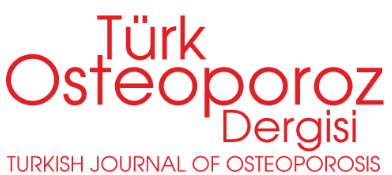ABSTRACT
Aim:
Osteoarthritis (OA) is a degenerative disease, that developes as a result of the impairment of formation and destruction processes in cartilage and sinovial tissues, with the effect of various traumatic, biomechanic, inflammatory and genetic factors. Material and Methods: In this study, risk factors and relation between OA and OP (osteoporosis) is evaluated in 127 patients with knee OA. Age, gender, obesity, menopause, ligamentous laxity, DM, injury of joint, genetic predisposition and proprioceptive defects are the risk factors in knee OA.
Material and Methods:
In this study, risk factors and relation between OA and OP (osteoporosis) is evaluated in 127 patients with knee OA. Age, gender, obesity, menopause, ligamentous laxity, DM, injury of joint, genetic predisposition and proprioceptive defects are the risk factors in knee OA.
Results:
No relation was observed between radiographic knee OA and scores of tests which evaluate pain and disability such as WOMAC and Lequesne; but there was a significant relation between obesity and WOMAC and Lequesne scores. Thus, obesity is a disability determinant in knee OA. We think that smoking has protective effects on OA, but this claim has to be proven with studies containing large control groups. In accordance with literature, we determined a significant concurrence between hand and knee OA. This relation gets stronger as severity of radiographic disease increases. In our patients with knee OA depriving clinical inflammation signs, CRP values were higher than control group and this was statistically significant. Therefore, we may not deny a chronic inflammatory response in OA. No significant relation observed between serum cholesterol values, lipid values, blood pressure and OA. However, presence of DM accelerates the radiographic progression of OA. Serum uric acid levels were significantly higher in our OA patients than in controls. The literature data, that high serum uric acid levels play role especially in generalised OA’s multifactorial etiology, is also supported by our results.
Conclusion:
Age, gender, menopause and genetic predisposition seemed to have more effects on the incidence of knee OA; while obesity, period of menopause, ligamantous laxity and DM seemed to have more effects on OA progression according to our results. (Turkish Journal of Osteoporosis 2011;17:14-20)



